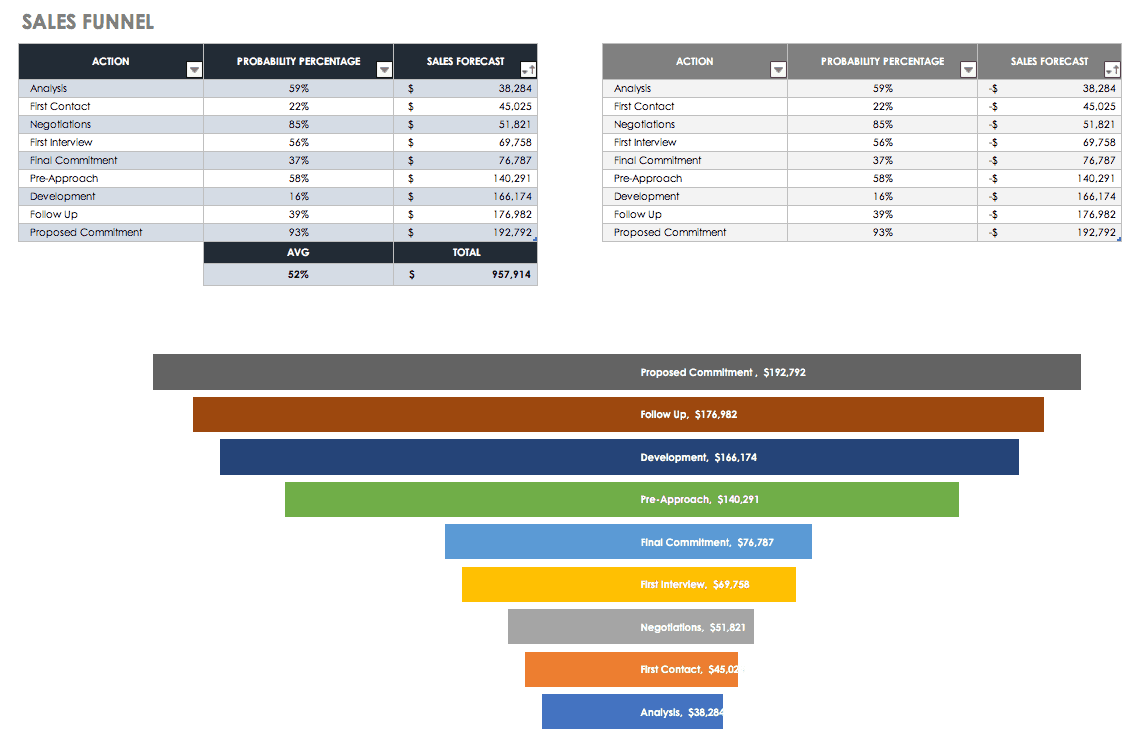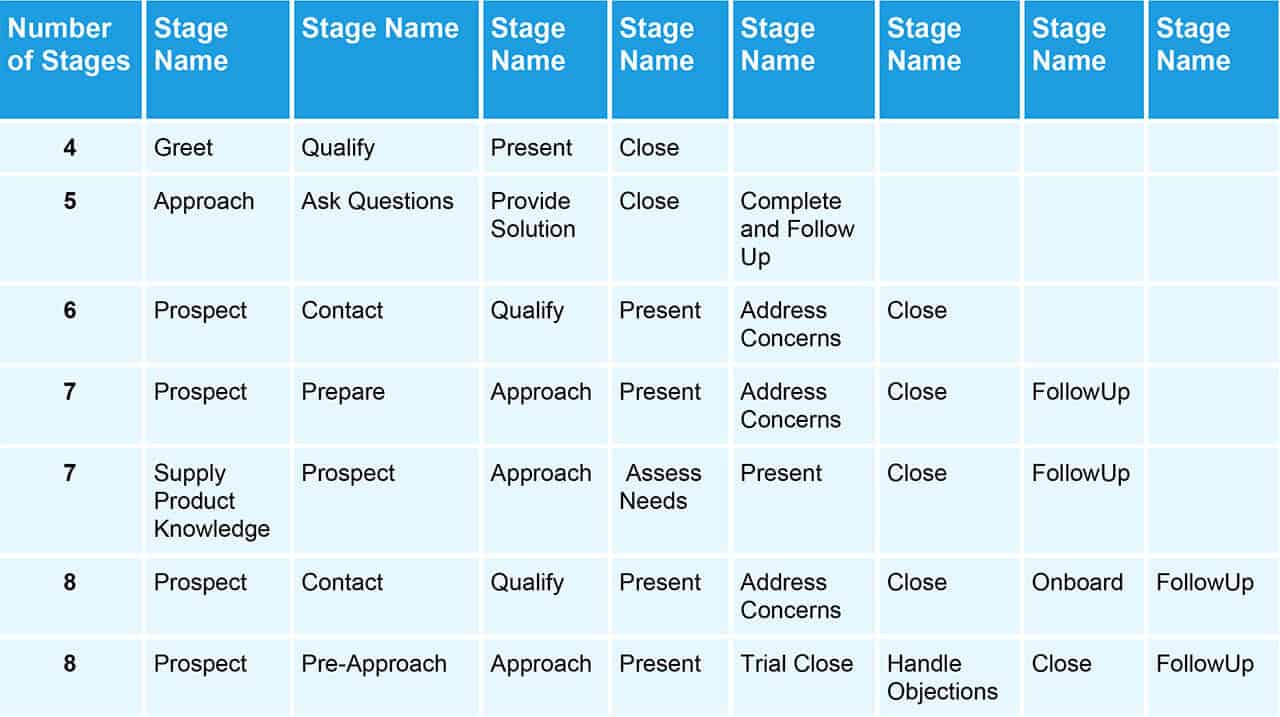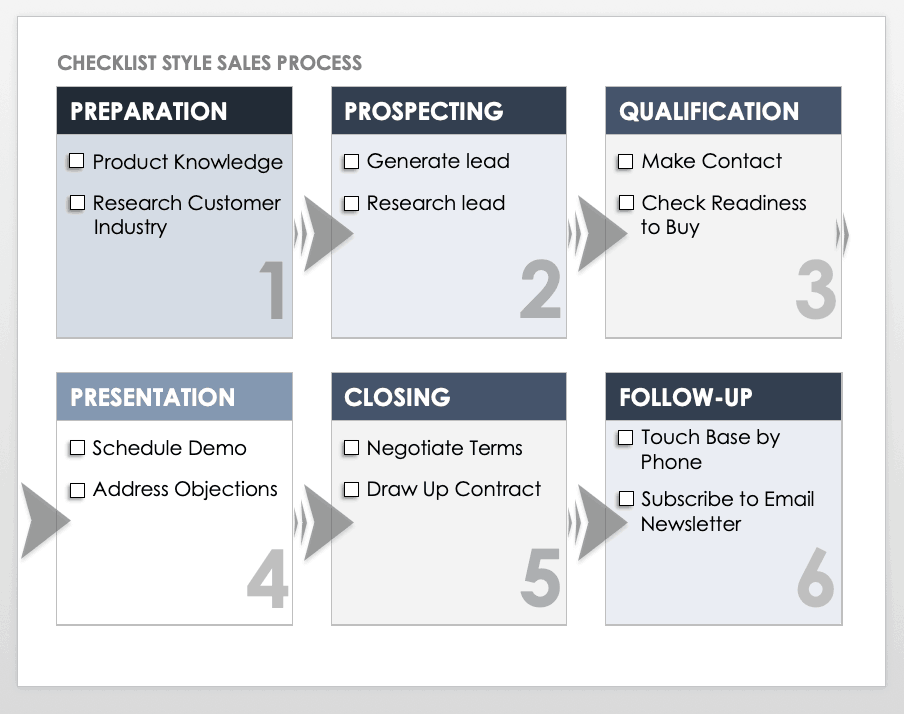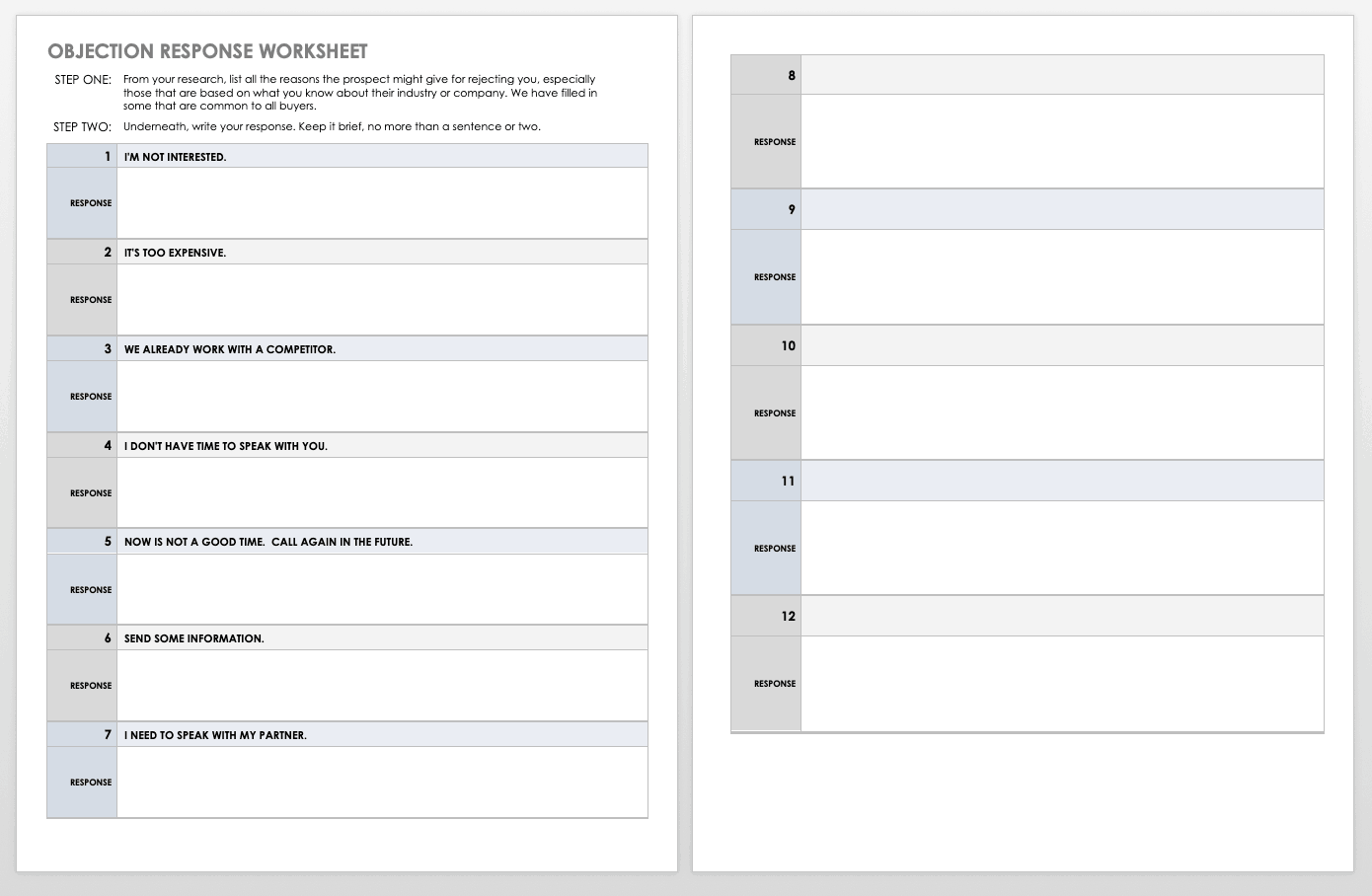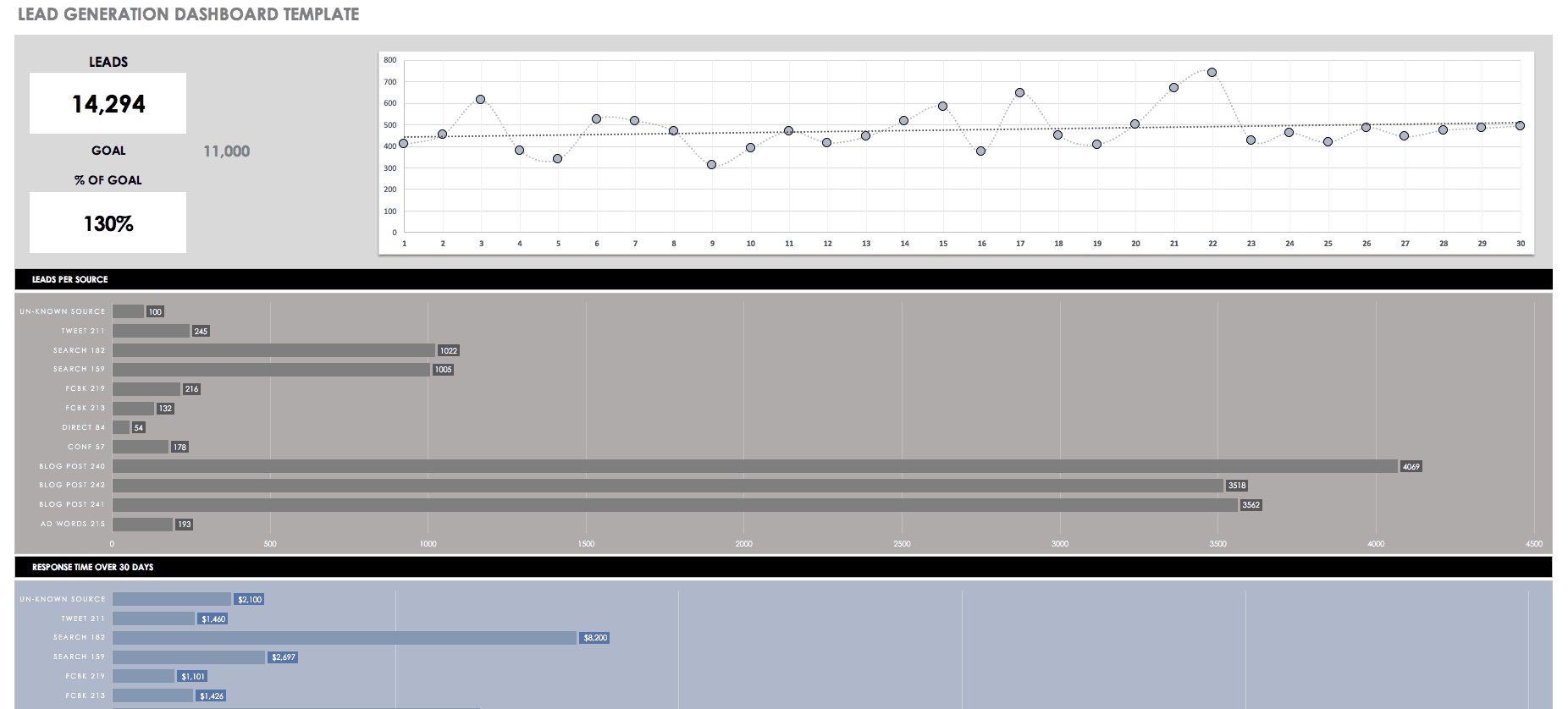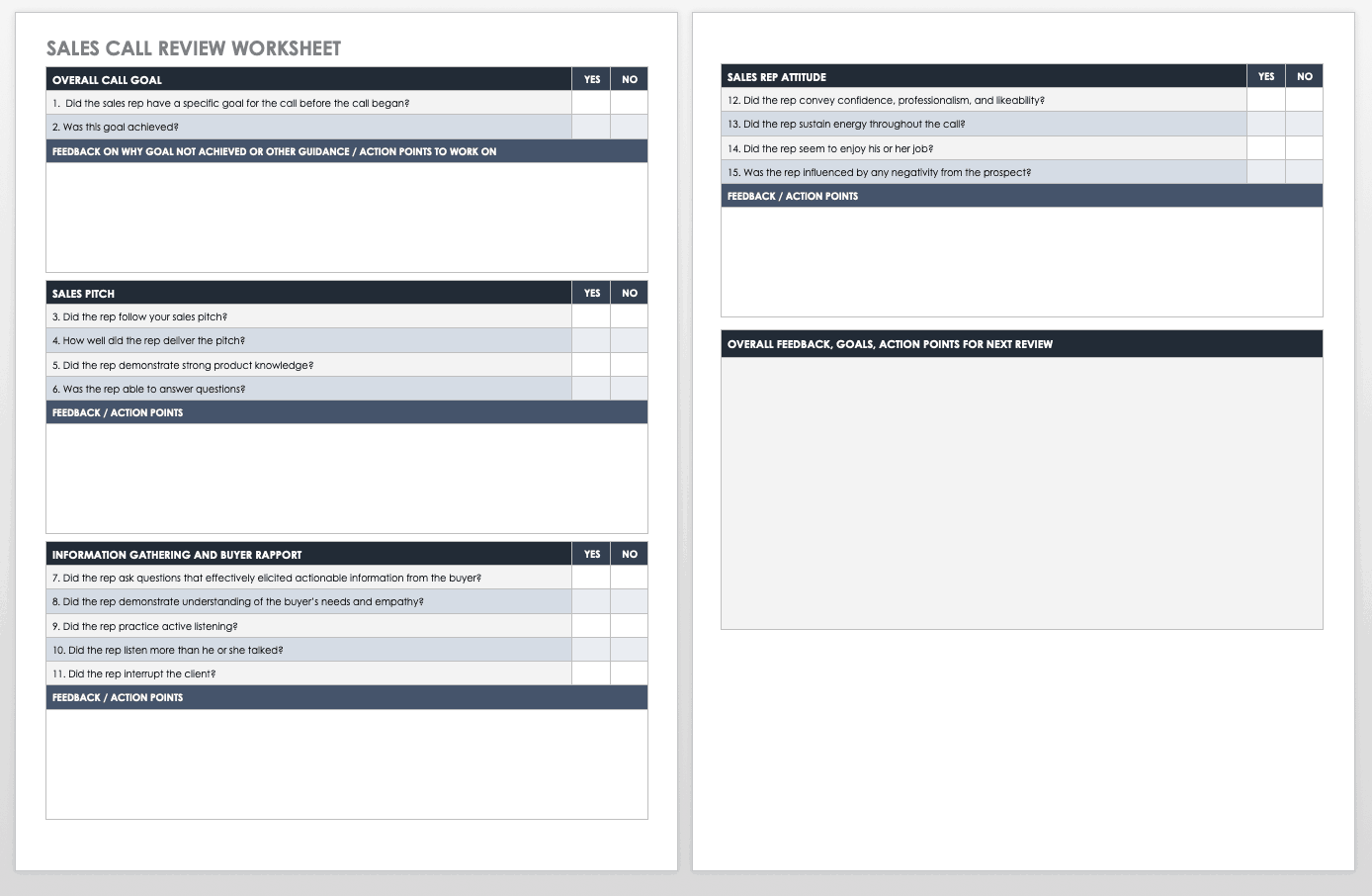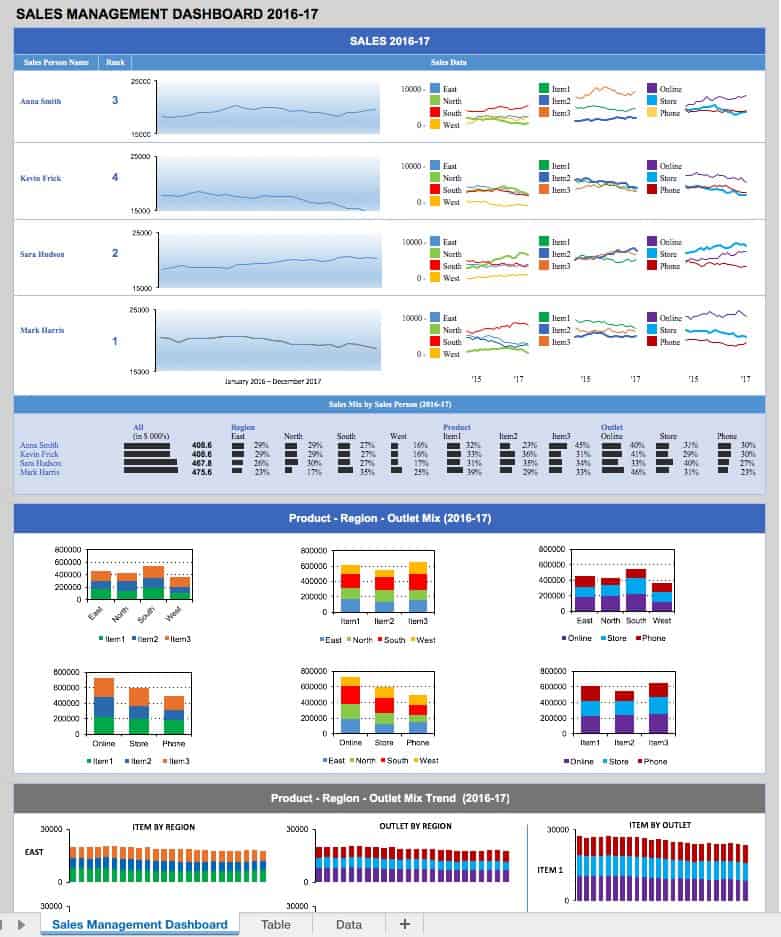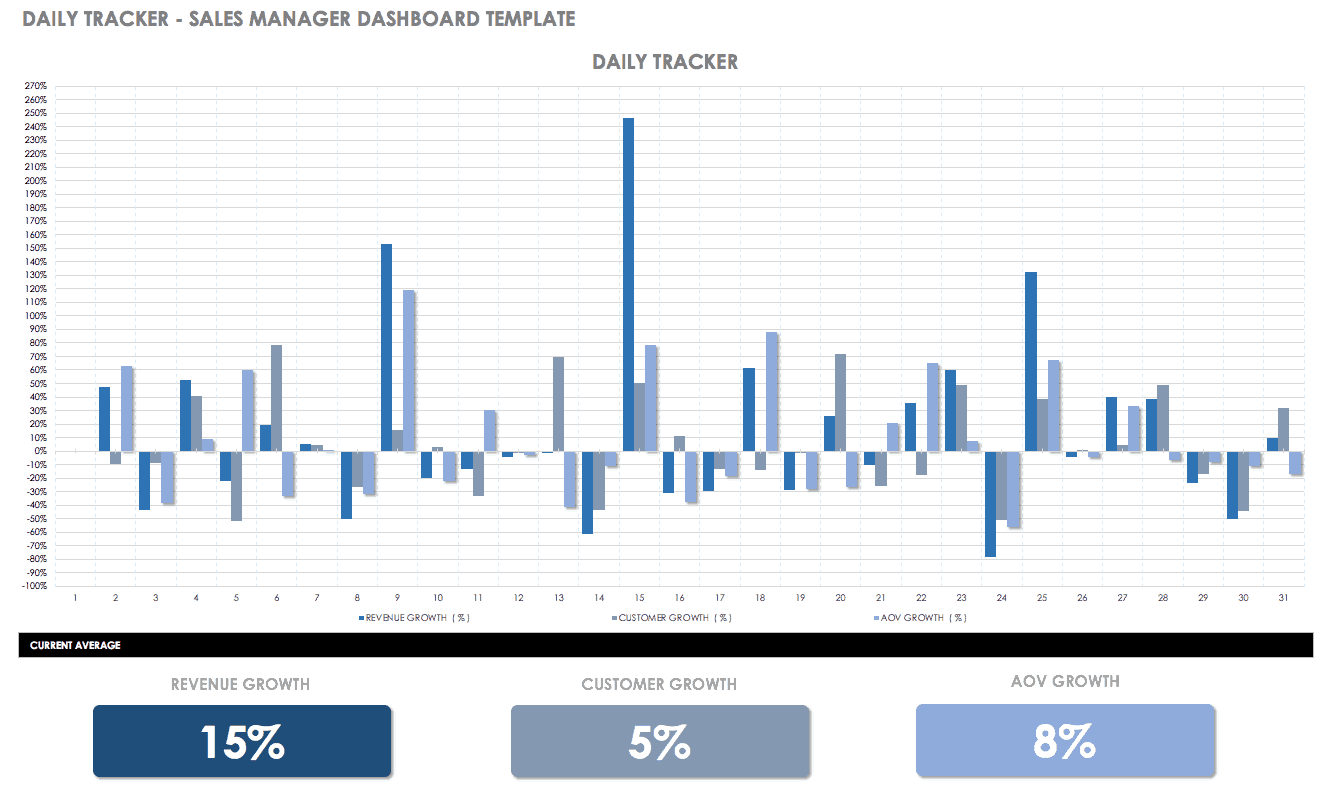What Is a Sales Process?
A sales process is a repeatable sequence of actions that converts prospects into customers. A strong sales process provides a framework of steps for sales reps to follow and close deals.
More broadly, a sales process involves relationship building at the individual and organizational level and includes actions that establish trust, educate, solve problems, and otherwise provide value for customers. Because sales processes are inherently customer centered, using a standardized sales process across an organization results in more closed deals, better margins, and a higher success rate with referrals. An efficient sales process also leads to more repeat business.
Sales processes can be intricate. The sequence of events can vary based on industry, complexity of product, cost, sales methodology, and brand experience. Each step or stage may involve multiple activities and touchpoints. Whether simple or complex, a sales process is a roadmap for a sales representative to turn a lead into a customer for life.
Building an effective sales process is a cornerstone of a strong sales operation. The sales process allows any member of a salesforce to employ best practices for finding prospects, reaching deals, and making lasting connections with customers.
Still, building a sales process that works consistently for different classes of customers is often a process of trial and error. The good news is that technology makes it possible to collect and analyze sales data, so you know what works.
Below are the hallmarks of a strong sales process:
- Repeatable: Create a process that sales reps can easily follow and repeat.
- Clear: Clearly define each step in the process and relate each to a specific outcome.
- Results-Oriented: Know why you are performing each step and have a concrete objective in mind, such as getting a prospect to agree to a product demonstration.
- Measurable: Ensure that your outcomes are measurable, so you can tell when a step or process is working.
- Responsive: Make sure that the sales process is adaptable to changing circumstances, such as a seasonal rush or fluctuations in reps’ workloads.
- Customer-Centered: Align the sales process with the purchasing journey of an ideal buyer. This means that your activities should directly correlate with the typical decision-making process a customer goes through.
What Are the Benefits of Having a Sales Process?
About 10 percent of U.S. jobs are in sales occupations, according to the Bureau of Labor Statistics. But, 60 percent of sales teams do not have a well-defined process, while those that do are 33 percent more likely to be high performing, according to industry estimates published by Salesforce.
With an effective sales process, any sales rep in an organization can employ the steps, and the process will scale with your sales team. Having a well-designed sales process enables a sales rep to use a tested approach and consistently replicate the desired outcomes.
Unlike systems built upon the star power of a handful of top performers, process-driven sales teams do not rely on the personalities or the networks of individual sales reps. Organizations generally find that they achieve weaker overall results when a few star salespeople stand out and many more reps turn in mediocre or inconsistent results.
While the sales processes for different products and industries vary, successful processes are quickly adopted throughout the divisions of a company or emulated by other firms in the same field.
Sales-process experts say the following benefits commonly flow from using a well- constructed sales process:
- The Team Focuses Its Efforts on the Best Prospects: A good sales process ensures that the sales team qualifies leads early and that an accurate understanding of a customer’s true potential to buy enables the team to allocate the appropriate amount of time and effort to each prospect. The most effective sales reps spend more of their time with their most profitable accounts.
- The Team Puts the Customer’s Priorities First: The right sales process ensures that the rep stays focused on the customer’s needs and problems and that the salesperson develops value-added solutions to those issues. This customer-centered approach helps convince the buyer that your team and product are in a unique position to help them.
- The Team Has More Profitable Sales: A robust sales process supports a stronger financial performance in many ways, including the following: fostering closer relationships between clients and the company; cultivating higher customer satisfaction that translates to more upsells and repeat business; giving greater insight into each stage of your sales pipeline; facilitating the seamless progress of customers through the buying process; and accelerating the onboarding and productivity of new sales reps.
- The Team Has a Higher Close Ratio: When your process is effective, each sale requires less effort, and more prospects turn into closed deals. You develop more powerful sales and marketing strategies because you are carefully monitoring your outcomes and tweaking anything that is subpar.
Key Terms for Understanding Sales Process Steps
In order to grasp the fundamentals of sales processes, you first need to be familiar with some key sales terms:
- Sales Funnel: This is a visual representation of the sales process that shows how a pool of prospects gradually narrows to a small pond of true buyers. The funnel consists of several stages that differ depending on the sales model you use.
- Download this template to construct your own sales funnel and estimate — at each stage of your pipeline — the potential revenue and likelihood of closing prospects.
Download Sales Funnel Template - Excel
- Prospects or Leads: These terms are often used interchangeably and refer to potential customers with varying levels of promise. A lead is an individual or company who has not yet expressed any interest in buying or who may not need what a sales rep is offering. A prospect, however, has a business problem that a sales rep can solve. If the prospect has indicated interest in a pitch — because the product fits their business needs and they have the budget to buy — they are a qualified prospect. So, prospects are further along than leads in the sales process.
- Buyer’s Journey: This term refers to the decision-making process that a buyer follows when contemplating a purchase. A simple buyer’s journey involves three stages: awareness (when the buyer understands they have a need for something), consideration (when they define the scope of their problem and evaluate their options), and decision (when a buyer selects and commits to a particular solution).
- Ideal Buyer or Customer Persona: This is a profile of the customer archetype that a business would like to attract. You can define the ideal customer based on demographic, psychographic, or behavioral characteristics. Sales reps use the personas to target and fine-tune marketing, lead generation, and prospecting.
How to Build a Sales Process: Step-by-Step Instructions
In this section, we will walk you through developing a system to define your sales process. At the baseline, building a sales process involves three main actions:
- Documenting your current sales process
- Identifying the stages of your new sales process
- Defining all the steps in each stage
Document Your Current Sales Process
First, let’s dispel a misconception. While you may not have articulated a sales process, you do have one, even if you don’t realize it. If you are currently selling anything, you are taking some action to nurture your prospects and close deals. That process may be haphazard, but it isn’t entirely absent.
The initial step toward improving your sales process is to document the process’ current state. A good analogy is to imagine you want to take a road trip to New Orleans. You can picture the destination (Bourbon Street), but you can’t map out the route to get there unless you know where you are starting.
In sales, your intended destination may be record-breaking revenues. But (to extend the analogy), if your team is in Bismarck, North Dakota, your journey to New Orleans will be vastly different than if you were starting in Atlanta.
So, first find out where your team is in its process. As Joe Malcoun, CEO of sales automation provider Nutshell, says, “Too often, sales managers build a sales process that has no relevance to or familiarity with what the team is already doing.”
After defining the sales process — an activity called sales mapping — you’ll likely find that your sales reps go through a sequence of three to seven stages. Each stage comprises a series of steps. A prospect advances to the next stage by meeting particular conditions, such as asking for a product demonstration. We will discuss this process in more detail later, but for now, just keep in mind the overall nature of its framework, that is, one that consists of steps and stages.
To begin documenting your current sales process,ask your sales reps two simple questions:
- What’s the first thing a sales rep does to engage a potential buyer?
- What’s the last thing they do after completing a sale?
Then, by sitting down and speaking with your sales team, you can gather the information that will form the basis of the steps between those first and last steps. Asking lots of questions will give you the most complete picture.
In order to understand your current sales process, ask the following additional questions about past sales efforts:
- How did you generate the lead?
- Did anyone assign or hand out leads?
- If so, what system did they use?
- Who took charge of feeling out the lead?
- How did sales make first contact with the lead?
- How many attempts did the sales rep make before getting in touch with the lead?
- Did the sales rep use a fixed schedule when attempting to contact the lead?
- What did the rep discuss in that first conversation with the lead?
- How did the sales rep record their first contact with the lead?
- How did the rep determine that the lead was qualified?
- What kind of contact did the rep coordinate next?
- What materials did the rep send to the lead, and when?
- How did the rep deliver the sales pitch (in person, via a phone call, a video chat, etc.)?
- How did you present the product or service (on a video call, on the phone, in person)?
- How did the sales rep prepare their pitch?
- When and how did your company prepare and submit a proposal?
- At which points, if any, did the negotiations stall or become tricky?
- What challenges did you face?
- If a rep lost a lead, at which point did they lose them?
- Was there post-sale contact with the lead? What form did it take?
- How long did the entire sales process take?
Document everything you learn, and group the information by rough stages of the sales process, such as lead generation or presentation.
In addition, take note of the words and tone the reps use to describe the sales process. Your revamped sales process should feel as natural to the team as possible — matching their current language and style will help.
Also, ask reps how they visualize the current process. They may have something in writing, such as a flowchart or funnel graphic. Or, they may use a mental image or concept drawn from daily life or another sales job. Incorporate helpful visual aids into your sales process.
Once you’ve got a full picture of the current sales process, you’re ready to proceed to the next step: structuring your ideal process.
Identify the Stages of Your Sales Process
Now, you’re ready to start designing your improved sales process model, and the first step is to lay out the stages.
How many stages should a sales process have? There is no right number. It depends on what you’re selling, the nature of your industry, the cost of your product or service, and other factors.
Generally, though, a method with fewer than three stages is not a genuine sales process, but rather a complex transaction. And, if you’ve got more than eight stages, you may be needlessly complicating your sales process.
Sales processes typically consist of four to eight distinct stages. The structure of the stages and their names vary widely among different systems. The sales field is subject to trends just like any other, and the popularity of different sales processes waxes and wanes. The “best” model depends on whom you consult, as each sales process type has its adherents.
The most significant common thread binding all sales processes, regardless of number of stages, is that they all move logically from inception (identify and connect with a potential customer) to conclusion (close a sale and follow up for referrals and repeat business). For example, a four-stage process might include the following stages: greet, qualify, present, and close. A seven-stage process might span the following: giving product knowledge, prospecting, approaching, assessing needs, presenting, closing, and following up.
Don’t get hung up on the details at this point. Feel free to pick what feels like the number of stages that will work best for your team. You will have an opportunity to revise your sales process based on how it performs.
He adds, “Many sales organizations have a tendency to implement too many stages and base them on sales activities rather than on buying phases (a huge mistake).”
So, how do you determine when to use longer or shorter sales processes? The longer sales processes are more prevalent at organizations whose products possess the following qualities:
- The sales model involves seeking out potential customers instead of waiting for them to come in knowing what they want.
- The product is relatively expensive.
- The product is marketed to an organization rather than an individual.
- The product is designed for specialist use.
You would be most likely to find these conditions with B2B products and services, such as IT, medical devices, and manufacturing equipment, as well as those products and services being offered at the enterprise level.
The term enterprise typically refers to large, multi-region companies, and selling to them involves nuances. Enterprises generally buy bigger quantities, and their contracts are usually for higher-dollar values and for a longer duration.
The sales process for enterprises is more complex at every stage because these big companies commonly have committees and levels of decision makers, rather than just one or two people making a purchasing decision. The enterprise-related sales cycle can stretch from six months to a year and involve many dozens of contacts with the would-be buyer.
Because this type of sales process involves a long selling cycle, you must be well capitalized, especially if you assign multiple sales reps to a single prospect. Sellers to enterprises must also be at the very top of their game in terms of industry and product knowledge. Enterprises have a large pool of competitors vying for their business, are much more likely to have mission-critical use cases, and tend to be highly knowledgeable about their options.
Conversely, shorter processes are more geared toward small to midsize, consumer-oriented businesses that sell such goods as vehicles, computers, and office products:
- The sales reps are less proactive about developing leads, and the customer may seek out the product.
- The product is relatively inexpensive.
- The buyer is an individual.
- The individual is making the purchase for general rather than specialized use.
Ultimately, though, sales processes consist of the same basic building blocks. So, regardless of industry, you will see commonalities in sales processes for all types of customers and products.
However, you should customize your sales process to your buyer, and buyer behavior is heavily influenced by industry, geography, size, and other attributes. To be most effective, your sales process should meet the buyer’s circumstances (that may mean ordering your activities to align with their needs).
Depending on your specific situation, you may also need additional stages. For example, if you serve a highly regulated industry or sell a product with health, safety, or privacy considerations, you may need a compliance stage or a step for obtaining government approvals or licenses.
Moreover, if you sell to governments and governmental organizations, law may dictate the selling process, so you’ll have very little latitude to change it.
For the purposes of this discussion, we’re going to assume that you’re using a six-stage sales process: preparation, prospecting, qualification, presentation, closing, and following up.
Now, provide detail for each stage of your sales process. For this part of the exercise, you can use sticky notes on a whiteboard. Create and label a column for each stage of your sales process.
Define a goal for each stage as well as criteria for moving a lead from one stage to the next. For example, for the qualification stage, the goal may be to research the suitability of the product to the prospect; the criteria for moving to the presentation stage might be determining that the potential customer needs to buy a product like yours within the next year and that they have allocated sufficient funds for said product.
For the presentation stage, the goal might be demonstrating your product to the prospect, and the criteria for moving on might be completion of the demonstration with positive feedback from the customer.
Here are other examples of steps that can trigger moving a prospect onto the next stage:
- The prospect has scheduled a phone call with the rep.
- The rep has answered follow-up questions and reassured the prospect about concerns.
- When the rep has made his pitch, the client immediately agrees.
Of course, at any stage, a potential customer can drop out and move to “no sale” or “lost” status.
Write down on sticky notes all the sales activities you’ve gathered in your chats with the sales team. Then, sort them by the stage columns you’ve created. If you end up with one stage — for example, preparation — that contains no sticky notes, that suggests that this stage is not part of your current sales process.
In a moment, we will talk about how to build out any empty columns and make sure that all the activities currently in the columns are well defined and in the right place.
But first, remember to confirm that your sales process reflects the buyer’s journey. Do not design the process for the convenience of the reps or to meet your internal reporting cycle. You should be building a process that helps the customer honestly assess their needs and determine the best solution.
When making B2B sales, it’s especially important to align the sales process with a buyer’s journey, because business-to-business buyers are more strategic. The products or services that businesses purchase are often more expensive, affect their own business processes (such as production), may have custom specifications, are price-negotiated, and take significant time to define and deploy.
The traditional stages of a buyer’s journey are awareness, consideration, and decision. However, complex B2B purchases usually involve a more nuanced buyer’s journey. The usual stages for a B2B purchase are as follows:
- Being Unconcerned: The buyer is not aware of the needs and issues you are addressing.
- Investigating: The buyer is aware of the issue and is investigating whether there is a need to act.
- Defining: The buyer has decided to act and is defining what the criteria for a solution should be and who should participate in the choice.
- Selecting: The buyer is evaluating a handful of options.
- Negotiating: The buyer is addressing concerns and seeking to obtain a best price.
- Approving: The buyer goes through formal approval processes.
Each phase of the buyer’s journey should mesh with one of the stages in your selling process. This alignment puts you in sync with your customer and positions your sales rep to perform actions that are helpful to the customer as they progress.
We will discuss each stage of your sales process in detail later on. But first, let’s finish laying out the process for mapping your system and constructing your sales process from end to end.
When making a checklist for your sales process, refine and build out each column. Arrange the sticky notes in chronological order from the top to the bottom of the column. That way, each column functions like a checklist for what must happen during each stage. Include all the activities in each stage of your sales process.
You can build your own checklist-style sales process by downloading this template. Fill in the stages that you are using, and then list the steps for each stage.
Download Checklist-Style Sales Process Template
When you go into the details of each stage, you may realize you want to add or delete actions. If you have any empty columns, you will learn what those stages should contain. So, you may want to read ahead and then resume at this point after you have added further sticky notes for the steps in each stage.
The system we have outlined so far works for uniform, straightforward, start-to-end sales processes.
A flowchart is the ideal way to represent any sales process with variability and to illustrate repeat activities and multiple courses of action, as different customer types will go through different buying journeys. For instance, a small customer generally buys an off-the-shelf, basic version of your product, and an enterprise usually buys a custom version with added features.
Another example might concern what you do about a prospect that isn’t willing to close a deal. Is that prospect lost forever, or do you move them to a “win back” position in which you try to reconnect with them in a couple of weeks? If you do the latter, you will probably resume your sales process at a different point than you would with a new prospect, and a flowchart is a helpful way to illustrate this.
How long should each stage in a sales process take? You’ll want to address this question by adding durations to your sales process map.
With input from the sales team, work your way through each customer pathway and estimate how long each activity and each path takes. You can list these quantities of time as ranges or as averages in days and weeks.
Another useful measure of duration is how long it takes to close a deal. An easy way to compute time-to-close is by working backward from the date the buyer signed the contract to when the rep first contacted the lead.
You should also know the duration of each part of your sales process for a number of reasons:
- Based on what customers expect and what sales reps typically experience, you can assess from a common-sense viewpoint whether your sales process model is too elaborate or too compressed. If either the former or the latter is true, you may need to re-evaluate your process.
- Sales reps need to know the expectations for how much time each step should take, so they can judge if they are managing their time wisely.
- Collect data on your sales process so you can spot bottlenecks and weaknesses, assess individual and team performance, and track trends over time.
Now, you’ll want to reality-check your sales process for its alignment with the customer. Step back and note the important decisions and commitments that the buyer would make at each sales-process stage. If your process and your customer are moving in lockstep, as we discussed earlier, your process is customer centered.
When you’re done, you’ll have a comprehensive picture of the sales process and the divergent paths the sales force follows when selling different things to different prospects.
You can implement your revamped process by introducing your team to it and educating them on best practices for each stage and step. Ask for feedback. You can adapt the process based on how it performs. Your process will also evolve with industry trends, market conditions, and product changes.
Define All the Steps in Each Stage of the Sales Process
Optimizing your sales process relies of having the details right at every stage. Following is a deep dive into the components of each stage in a typical six-stage process (preparation, prospecting, qualification, presentation, closing, follow-up). If you see activities that you want to add to your process, write them down on sticky notes as you go along.
- Preparation: Preparation is when a rep gets ready to connect with leads and prospects. The key actions involved in this stage are gaining product knowledge and understanding your customer’s landscape.
While these actions may sound obvious, educating yourself thoroughly about the product or service that you are selling is a critical and often overlooked step. You must understand every aspect of how your offering works, including its features, benefits, and common problems. Get hands-on experience with the product, and talk to counterparts in other parts of your organization, such as product development, design, and service.
Gaining product knowledge should be part of your sales reps’ onboarding process, but reps should also be continually familiarizing themselves as part of both their formal and informal ongoing training. This training can include quick, weekly product tips sessions, quizzes, and requirements, so reps can stay up to date on their own.
While not knowing your product is a fatal flaw, speaking like an expert can have drawbacks too. This problem crops up more often when technical specialists go into sales. They often find themselves on a different wavelength than potential buyers, as they can have trouble seeing a product through a newbie’s eyes. Moreover, prospects tend to think in terms of benefits, while technical experts think in terms of features. If a sales rep can’t reconcile the two, the chances of making a sale are slim.
A good practice is to ask “so what?” of every feature you’re touting, so you can connect them with real-world buyer needs. For example, if your software has a feature to send notifications when a project’s status changes, the “so what” might be: “Notifications automate the ability to keep all project participants up to date and reduce the chance that something will fall through the cracks.” Framing a feature this way offers the buyer a concrete business rationale.
In addition to knowing your own offering, your sales reps must understand the industry landscape of your customers, including the changes and competitive pressures they face. If you sell computer systems to the utility industry, you need to understand the new regulations, priority issues, and demand trends in the utility world. Research the potential buyer’s common business problems.
You also need to know your competitors and understand how your product and your competitors’ products are trying to address the same problems.
Other good practices include delving into product knowledge databases to understand how previous customers found value in your products, and, on the flip side, reviewing complaints. With experience, sales reps will build knowledge of the product and how customers use it.
It’s helpful to write down all the common objections from prospects and and to have responses ready. Download the following worksheet to collect this information and to brainstorm replies, and use it as a handy cheat sheet.
Download Objection Response Worksheet
For this stage, some sticky notes might include things like researching the buyer’s industry, memorizing the product specs, and making a list of how features address the problems of a specific buyer persona.
- Prospecting: Prospecting occupies the top of the sales funnel, and this stage is about identifying potential customers. Some organizations lump lead generation with prospecting, but as we discussed, leads and prospects aren’t the same thing. The key actions at this stage include identifying potential customers and researching the prospect.
To identify leads, sales reps may spend time combing customer relationship management (CRM) databases, mining social media networks, and frequenting industry events. With LinkedIn, it’s easy to shortlist people — usually executives — with purchasing and decision-making authority.
If you have the ideal buyer personas we talked about earlier, you can look for leads who share the characteristics of your ideal customer, such as demographics and industry. Doing this improves the chances of turning leads into prospects. Buying lead lists is also an option, as is running a referral program for customers.
For a well-supplied sales funnel, prospecting needs to be something that everyone, not just a sales rep, does. Another good practice is to assign the most promising prospects to the strongest sales reps in order to maximize the chance of landing big deals.
Use this template to make a dashboard that tells you prospect status at a glance. The dashboard can provide a clear picture of your most successful lead sources, conversion rates, and success at reaching your goals.
Download Lead Generation Dashboard Template - Excel
In your prospecting stage column, you might have stickies that include things like attending a networking event, searching social media for ideal customer matches, and collecting customer referrals.
- Qualification: This stage, also called approach, begins with the first direct contact with a lead. Needs assessment begins, and both the lead and sales rep try to figure out what they stand to gain from moving forward. The key actions during the qualification stage are making contact with the lead and researching whether the product is a good fit.
In theory, the sales rep’s job during this stage is simple: Connect with a lead via email or phone and assess their interest in your product. But, it can be harder than you think to reach people or maintain contact in the likely event that they get distracted (according to the BBC, the average person’s attention span in our technology-accelerated times is reputed to be just seven to eight seconds, though that figure is subject to some dispute).
The first contact is the equivalent of an elevator pitch. A sales rep rarely has more than one chance to make a good impression, so you need to accomplish a lot during this opportunity. Write yourself a cheat sheet of the key points you want to make, and rehearse them until you can deliver them smoothly.
Here are some priority actions for this step:- Introduce yourself.
- Explain why you are contacting the buyer.
- Describe your offering.
- Be positive and authentic.
- Seek to build rapport.
- Don’t try too hard to be liked; earn respect.
- Determine if the lead wants what you are selling.
- Gather information about their needs and budget.
- Practice active listening.
The next contact is normally an appointment in the form of a scheduled phone call. There are a few time-tested approaches for this interaction:
- Asking Questions: Gather information through strategic questions, such as “What problem are you attempting to solve?” “What is your day-to-day work life like?” “Who will make a decision about the solution to this problem?”
- Product Approach: Bring in free samples or offer a trial.
- Premium Approach: Make a gift or invite the prospect for a meal or to a sporting event. This method can be costly and does not work as well as it did in the three-martini-lunch era. Buyers have to justify their decisions to other organizational stakeholders and produce concrete results, so they are unlikely to buy from you just because you enjoyed a baseball game together. However, this sort of networking can build rapport during a prolonged sales process that involves complex products. Just don’t rely on the premium approach to carry the day.
Analyzing how these discovery calls have gone helps sales reps improve. If you are a sales manager, periodically review how your rep is performing by sitting in on a call or listening to a recording, and coach them to execute more successfully. Use this worksheet to assess performance on actions, such as delivering the pitch and building buyer rapport. Then, prepare for your coaching session with your rep by filling in feedback, action points, and goals.
Download Sales Call Review Worksheet
Next up is a more serious effort to qualify the prospect. The sales rep usually gets this activity started by determining that a lead understands and wants what they’re selling and has the purchasing power and authority to buy.
Since it’s difficult to elicit this information without appearing nosy, sales reps are likely to ask prospects to talk about their role, responsibilities, and business problem. The sales rep listens carefully and empathetically, taking notes.
If the prospect seems viable, the sales rep must assess whether they meet the formal requirements for qualification. Each sales force needs metrics for qualifying prospects.
The most well-known metric is a framework called BANT: budget, authority, need, and timeline. Does the prospect have the money required to buy the product? Are they authorized to make a purchasing decision? Do they need the product? Is their deadline realistic for the seller?
To find the answers to these questions, a sales rep must do the following:
- Assess the prospect’s needs and weigh any pain points.
- Identify and obtain contact information for the organization’s decision makers.
- Form an initial assessment of how large the account may be in terms of units or dollar-amount purchases.
A full needs assessment might follow. This would be a more technical process that focuses on measurable business problems and potential solutions so that the sales rep can coordinate a more effective presentation.
Some sales reps engage in an additional step here: thoroughly researching the prospect company. They usually do this by speaking to multiple contacts within the company in order to build a holistic view of the buyer company’s objectives and business problems. In fact, some reps say that a good sales rep understands the company better than the prospect who actually works there.
In your qualifying stage column, you might have stickies that include things like writing a cheat sheet for the initial contact and assessing the prospect based on BANT criteria.
- Presentation: Once you’ve fully qualified the prospect, move on to the presentation stage. This is when the sales rep demonstrates the product or walks through a presentation of the service offering. Key actions at this stage include pitching the product or service, personalizing the pitch for the buyer’s needs, and addressing any objections.
After a qualified prospect has scheduled a presentation, the sales rep typically does the following: conducts further research on the company; determines the use cases for the product; and defines the product’s would-be stakeholders. This is all in order to build on what they’ve learned during qualification.
Based on what the rep learns, they may decide on a specific angle for the demo. Then, they prepare to field queries and objections.
The presentation is a seller’s chance to make a persuasive case for why their product makes sense for the buyer. An integral part of this stage is personalization. Performing a sales demo won’t convert a prospect if you do it with little regard for how the seller would want to use the product. That’s why the research and needs assessment steps of qualification are so vital.
Support your case with success stories or testimonials. A slideshow making the case for money saved or efficiencies gained from your solution is helpful. The rep may also bring a product engineer or designer to the presentation in order to add expertise.
In a demo, the sales rep can show the value their product will add, or they can model the cost or risk of not implementing their product. Refrain from over-the-top statements and excessive claims — they will only hurt your credibility. The goal is to position yourself as a trusted advisor who has done their homework.
The buyer will surely have follow-up questions, and a sales rep will have to address objections. So, anticipate these inquiries and have answers ready. Common objections include the cost, timing, or a reluctance to do things differently. Sometimes, the buyer will raise objections that are beyond the sales rep’s power to resolve, and the deal falls through.
Persistence frequently pays off. According to Robert Clay of Marketing Wizdom, only two percent of sales occur at the first meeting, and 80 percent of sales need at least five follow-ups to convert. But, 80 percent of salespeople abandon their efforts after the third rejection.
After the presentation, a sales rep will make follow-up calls to address remaining concerns or to reiterate the salient points of the pitch.
In your presentation stage column, you might have stickies that include things like schedule a demo, develop a personalized pitch, and prepare responses to objections.
- Closing: This is the stage when a sales rep makes every effort to get a client to put pen to paper. The closing stage can be a chance to build on a seemingly successful presentation or even to rescue one that wasn’t so great. So, it’s surprising that closing is often seen as a formality, rather than part of the selling process. The key actions involved in the closing stage are negotiating the terms and gaining a formal agreement from the buyer. Closing is also a chance for a sales rep to overcome any remaining buyer concerns.
Closing is easiest when the stages leading up to it have gone smoothly and the client is now primed to purchase.
Closing typically includes both verbal negotiations and the preparation and submission of a proposal. A proposal records the terms of the transaction that the rep has verbally communicated, and agreement to those terms serves as authorization for the sale to go through. At this stage, some negotiating on minor details may remain, but both parties have agreed on the major elements of the sale.
Strong sales reps have a repertoire of effective closing techniques that they can match to buyer personality and circumstances.
Sales reps, especially those who are new to the job, can sometimes come across as apologetic when they quote a price. This conveys a lack of confidence in the product and may prompt the buyer to take a tougher negotiating stance.
Not all closings will work out, of course. But even when there is no sale, the rep can still salvage something by requesting a referral or, if there’s a hint that the opportunity isn’t dead, creating a follow-up plan.
Once a deal closes, the contract passes on to an account manager or a customer service representative. But that’s not the end of the sales rep’s involvement in the sales process.
In your closing stage column, you might have stickies that include things like prepare a proposal and review the strongest potential closing techniques.
- Follow-Up: After closing, it’s usually helpful for the sales rep to stay on board while you onboard the client. The follow-up stage is also an opportunity to begin a longer-term relationship with a client. The key actions during the follow-up phase are checking in with the buyer after delivery or onboarding, asking for referrals, and creating a plan for continuing contact with the customer.
Retaining customers is several times less expensive than acquiring new ones, so repeat sales and upsells are crucial to most companies’ sales plans. But, these deals are only possible with a well-executed series of follow-ups. And, follow-ups are best handled by the salesperson who handled the original deal, because the rep has already established a rapport and trust with the buyer.
Following up should, in fact, be the longest stage of the sales process. That’s because maintaining relationships requires diligence. After a deal closes, the customer appreciates the rep’s personal involvement in onboarding. And, over time, the sales rep should keep tabs on client satisfaction and any emerging needs.
A crucial step at this stage is to ask a customer for referrals. These prospects generally have a much higher likelihood of coming to fruition than do cold leads.
During this stage, the cardinal sin is not following up enough. Contact should begin immediately after delivery. Too often, sellers do not view delivery as part of the sales process, but this aspect of the transaction must be problem-free in order to set the stage for further business.
To keep from becoming an annoyance, a sales rep can follow up according to cadences built into your CRM. Decide how frequently to contact a customer and which actions to include. Some options include sharing a helpful article by email, liking or commenting on the contact’s social media posts, sending a support newsletter, and phoning to inquire about how the product is performing and about any changes at the buyer’s organization.
Good follow-up is not pushy or overwhelming. It should remain engaging and prompt reciprocation. A well-nurtured relationship becomes a source of referrals, which makes future sales easier.
In your follow-up column, you might have stickies that include things like add the customer to the newsletter list, ask for referrals, and check in after delivery.
How to Measure the Effectiveness of Your Sales Process
At this point, we have moved through the three phases of building your sales process: documenting your current one, identifying the stages of your new one, and defining all the steps in each stage of your new one. But, your work is not yet done.
To monitor and keep improving your sales process, you need to measure and track data. Each stage will have at least one metric that you should follow. The main utility of these numbers is that they show trends over time, so you can see if your team is making progress.
Here are some of the key statistics:
- Pipeline: The number of prospects in each stage of the pipeline.
- Pipeline Movement: The number of prospects moved in and out of each stage during the period (typically the month). This stat helps reveal bottlenecks or capacity constraints.
- Stage Duration: The average length of time that a prospect spends in a stage.
- Sales Cycle: The average length of time from inception to close.
- Call and Demo Conversion: The percentage of prospects who agree to a demo or presentation after a discovery call and the percentage of prospects who close after a presentation.
- Closed Value: The number of deals that have generated revenue as well as the total revenue.
- Leads by Source: This indicates which channels are resulting in leads. Are you generating them from Facebook ads, brand ambassador street teams, or someplace else entirely?
- New Business versus Upselling: Know your retention rate and have a healthy ratio of new, incoming business.
- Win-Loss Rate: How many opportunities are won vs. lost?
Use this sales management dashboard template to track performance by salesperson, product, region, and more. Having this data at your fingertips can provide insight into any issues that you may need to resolve, enhance employee accountability, and drive progress.
Download Sales Management Dashboard Template - Excel
Use this sales manager template to instantly see your team’s overall daily sales and obtain information about customer and revenue growth.
Download Sales Manager Template - Excel
You can also analyze your data to make better predictions about what deals will close or which customers have the best lifetime value to your organization. Some sales automation tools include these analytics.
Let’s say, for example, that there’s a certain type of customer that features a very high churn rate — meaning that when they’re signed up for a subscription-based payment model, many of them cancel their subscriptions each year.
The sales manager suspects that these customers have something in common, so the manager runs an analysis to see whether they share certain measurable behaviors early in the sales process. (These behaviors could include the number of attempts necessary to make contact with the lead, the amount of time it takes to coordinate a presentation for them, or characteristics of the client’s organization, such as size.) This analysis shows which sales practices are translating to particular sales outcomes and, thus, allows sales managers to tweak things accordingly.
Tips for Supercharging Your Sales Process
A sales process is never set in stone. Products and industries, buyers and sellers, and technologies and norms all change, so your sales process needs to be adaptable.
Sales experts recommend these tips for continuing the improvement of your process:
- Keep Your Ear to the Ground: Sales managers, particularly if they don’t venture into the field very often, can benefit hugely from conferring with sales reps who do that every day and are often the first to know what’s working for reps from other companies.
- Stay Abreast of Sales Technology: Make sure your supporting technology stays current and maximizes your efficiency. Artificial intelligence (AI) and analytics are adding new power to CRM platforms all the time. The right technology will help you generate viable leads, improve productivity, analyze and summarize data and process outcomes, and enhance communication with the customer.
- Get Fresh Eyes on Your Process: Arrange to have someone outside the sales team conduct a sales process audit. While the people who are closest to a process are intimately familiar with its workings, they can be blind to its failings. An outsider can shed light on process shortcomings that aren’t visible from within.
Additionally, you can accelerate your sales process with the right sales methodology. Distinct from sales process, sales methodology is the general style or philosophy behind the sales process. The methodology determines things like how a sales rep assigns and qualifies different leads, how reps position themselves, how sellers approach the business problems they’re offering to solve, and what kind of content reps distribute to clients.
You only have a single sales process (even if it has multiple pathways), but you can execute that process using a number of different sales methodologies. There are about a dozen that you’ll see in common use.
How a sales rep comes across to a buyer hugely influences buying decisions. So, tailor your approaches to the buyer even if you’re still carrying out the same steps in exactly the same order.
Being skilled at multiple methodologies is a powerful tool in the sales rep’s arsenal. Depending on your vertical, branding, or other attributes, you may use one methodology or several throughout your process.
Here are some of the most popular sales methodologies:
- Challenger: Challenger is a B2B sales framework based on a book by Matthew Dixon and Brent Adamson entitled The Challenger Sale. Challenger contends that there are five types of B2B sales professionals: the relationship builder, the hard worker, the lone wolf, the reactive problem solver, and the challenger. Driven and assertive, challengers are recognizable by their passion for exploring business issues and their ability to propel the customer into action during the sales process by telling them what they’re missing out on. As such, the challenger comes across as fully invested in the business process. Their tactic is sometimes summed up as teach-tailor-take: teach the buyer what they’re missing, create a tailored solution that remedies this shortcoming, and then take the deal.
- Inbound Selling: Inbound selling is a sales methodology for the digital era in which buyers can interact with and research products before they ever contact sales reps. With inbound, reps adopt a reactive approach to selling and a proactive approach to content marketing. This methodology invests in creating personalized content, disseminating it to a well-defined audience, and waiting for buyers to come. Inbound selling integrates sales with marketing. This methodology appeals to clients who don’t like being pursued by salesmen and who navigate the buying process on their own terms. Compared with old-school outbound marketing, where sales reps pursue prospects, inbound marketing is akin to fishing with a rod and bait.
- MEDDIC: This methodology focuses on using a quantitative qualification process to help sales reps create a plan in order to close each deal and direct leads to sales reps who are best suited to handle them. The MEDDIC method (metrics, economic buyer, decision criteria, decision process, identify pain, and champion) requires sales reps to do the following: work with prospects to answer questions regarding the economic impact of a business problem; determine who controls the purse strings and what criteria this buyer will use to make their selection; and identify who is going to champion their product up the organizational hierarchy to the eventual buyer.
- NEAT Selling: Developed by The Harris Consulting Group and Sales Hacker, NEAT (needs, economic impact, access to authority, timeline) sharpens prospect qualification from both the seller’s and the buyer’s point of view. When employing this method, the sales rep does the following: delves deeply to identify a buyer’s most compelling needs; expresses the solution to needs in terms of economic impact (rather than the current economic state); finds a way to access higher-ups at the buying organization by using the initial contact as a champion; and sets a timeline for the sale that adds a sense of urgency to both parties’ efforts to make a deal.
- Sandler Selling System: At about half a century old, the Sandler methodology is one of the most established on this list. It calls for sales reps to frame themselves as trusted advisors who are as invested in solving a problem as the buyers themselves. This method requires special skills in relationship building and lead qualification. The Sandler method also requires sales reps to address legitimate objections early and honestly, thus, saving both parties time and building reps’ own image as honest advisors. One of this methodology’s more intriguing features is that it sets up a paradigm in which the buyer pushes the seller to make the sale, instead of the other way around.
- Solution Selling: This method made waves in the late 1980s, though it was around long before then. Solution selling shifts the emphasis of sales from the seller’s products to the customer’s problems. The sales rep and the would-be buyer start with the buyer’s problem, and if the salesperson does their job, they end up agreeing that the seller’s product is the solution. Solution selling went on to influence the development of other sales methodologies, such as consultative selling and customer-centric selling. These techniques borrow the idea of the salesman as a trusted advisor who possesses a high level of product knowledge and who will follow through with clients only if their product genuinely solves the buyer’s business problem. These methodologies also emphasize a high degree of in-depth research into business problems, so the advisor can come with optimal fixes.
- SNAP: Less than a decade old, Jill Konrath’s SNAP methodology is the new kid on the block. In a hectic world, Konrath realized that because buyers were always going to be busy and distracted, sellers would have to find a way to make sales short and sweet. Her solution was a process focused on speeding up the sales process by being simple, invaluable, aligned with a customer’s needs, and a priority from the outset.
- SPIN: Another methodology from the late 1980s, SPIN (situation, problem, implication, need-payoff) comes from a book by Neil Rackham that focused on the questions sales reps need to ask in order to create tailored solutions for customers. Rackham’s method encourages questions that enable sellers to understand buyers’ situations, identify core problems, and explain the problem’s impact on the buyer’s business — all to encourage the buyer to enunciate their needs so that the seller can frame their product as the solution. SPIN works best when you use it to close transactions with small businesses.
- Target Account Selling: Supported by a popular automation on Salesforce, target account selling seeks to simplify the act of selling to a large, complex organization in which politics can slow things down or even scuttle deals. The idea is to break down a big deal into smaller, more manageable components. Target account selling is an expensive methodology, because you must train sales reps to use it. This technique has become a standard in sales over the last three decades.
- ValueSelling Framework: This methodology emphasizes the effective repeatability of a sales process. This focus cuts costs and frees up resources for investing in sales staff training. With extensive documentation requirements, this method zeroes in on a stringent sub-process of prospect qualification. The payoff of the ValueSelling Framework is that value sellers can identify and engage primarily with high-value deals and reap the benefits of a process that is fine-tuned to close these deals.
Improve Your Sales Process with Smartsheet for Sales
Empower your people to go above and beyond with a flexible platform designed to match the needs of your team — and adapt as those needs change.
The Smartsheet platform makes it easy to plan, capture, manage, and report on work from anywhere, helping your team be more effective and get more done. Report on key metrics and get real-time visibility into work as it happens with roll-up reports, dashboards, and automated workflows built to keep your team connected and informed.
When teams have clarity into the work getting done, there’s no telling how much more they can accomplish in the same amount of time. Try Smartsheet for free, today.
